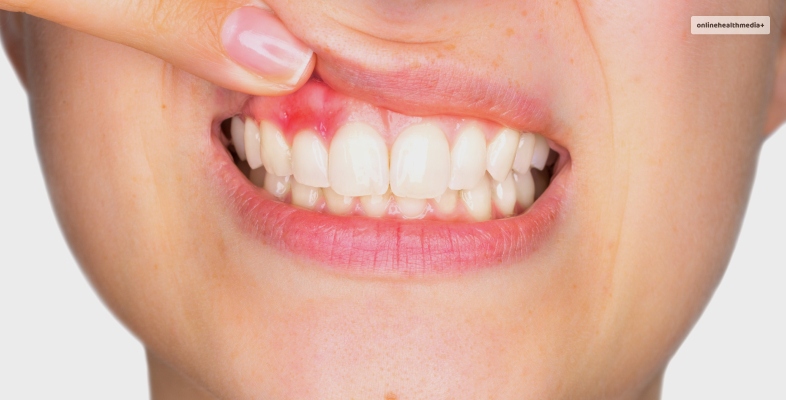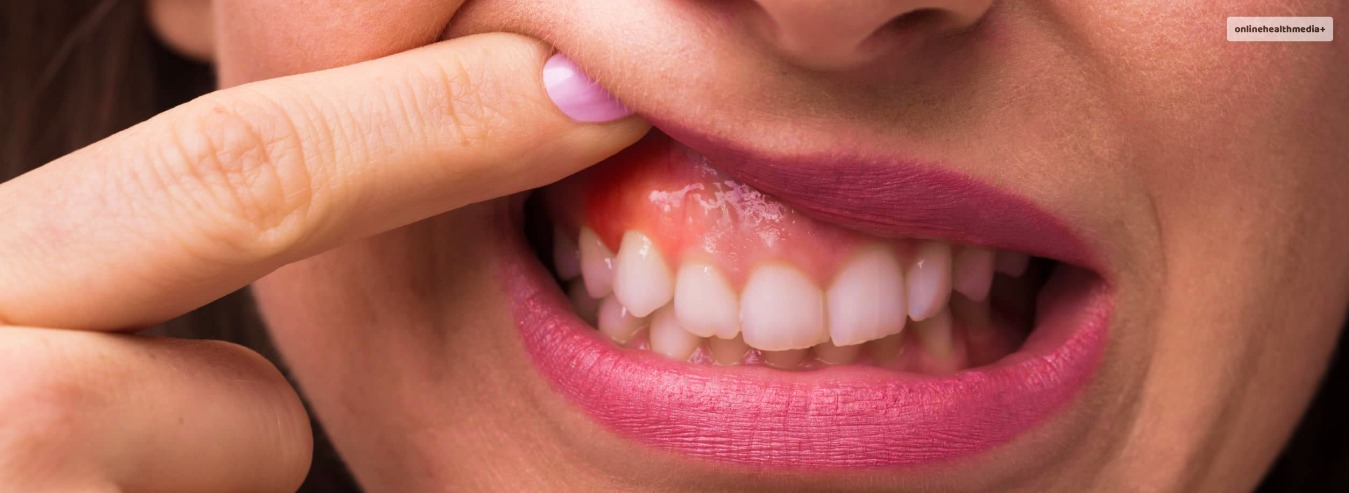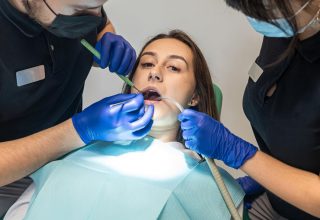How To Treat Burned Gums From Teeth Whitening?
Many people go through a teeth whitening process if they think that their teeth are becoming a bit too yellow. However, one of its primary (albeit temporary) side effects of doing so are gum irritation. However, if your gums are burning after teeth whitening, how to treat burned gums from teeth whitening?
If this is what you wish to know to soothe your burning gums, you have come to the right place. Keep reading to learn why your gums burn after teeth whitening and how to prevent and treat it.
What Causes Burned Gums From Teeth Whitening?

If you wish to know why your guns burn after teeth whitening, there is only one answer – Hydrogen Peroxide.
When you get your teeth whitened, dentists use several whitening products to do so. However, if you ever get the chance to check the compositions of these products, they all have one ingredient in common – Hydrogen Peroxide.
When Hydrogen Peroxide gets used in your teeth to whiten them, there is a high chance that it might cause a burning sensation in your gums. However, you are more likely to feel this with sensitive teeth and gums.
While it’s true that Hydrogen Peroxide is present in the toothpaste you use twice daily, it’s not as concentrated as it is on teeth whitening agents. If used in minuscule quantities, it will not cause any irritation or burning sensation in your gums.
Therefore, if used in higher doses (during teeth whitening processes), it irritates your gums and gives you a burning feeling. However, there is nothing to worry about since this irritating feeling is only temporary.
Also, if you face gum irritation after the teeth whitening process, you might develop white spots in your gums. If they cause a burning sensation, it means that these white spots are nothing but concentrated spots of Hydrogen Peroxide. To avoid such complications, it is recommended to get teeth whitening done by a professional service like TheSmileBar, who can ensure that the procedure is performed safely and effectively.
Read More: What Is Root Canal Treatment And Do You Need One?
How To Prevent Teeth Whitening Burning Gums?

If you wish to learn how to treat burned gums from teeth whitening, there are various ways to do so.
- Visit your dentist before doing any at-home teeth whitening. If you’re prone to teeth or gum sensitivity, consult your dentist before using teeth whitening products. They can give you tips or point you toward products that may lessen sensitivity-related symptoms.
- Choose a Toothfairy custom-fit whitening tray. One of the best ways to prevent teeth whitening products from seeping out of your tray and toward your gums is to opt for a custom whitening tray that will fit your mouth perfectly.
- Use sensitive toothpaste. Another step you can take to minimize irritation and pain around your gums is to switch to a sensitivity toothpaste.
- Reduce acidic food and drink in your diet. Acidic foods can amplify gum sensitivity and irritation. If you’re experiencing pain in the gum area after teeth whitening, avoid acidic food and drinks like coffee, wine, and citrus fruits like lemons and grapefruits.
- Read instructions carefully. Proper application of teeth whitening products — whether you’re using a tray, strips, or a whitening pen — will significantly decrease your risk of burned gums from teeth whitening. Oftentimes, a rush to apply the product to your teeth or leaving teeth whitening products on for too long is what leads to that burning sensation or sensitivity.
- Remove any teeth-whitening gel from the gums. When applying your teeth whitening product, it’s vital that you keep the effect on your teeth and avoid the gums. You can take a tissue and wipe away anything that gets too close to that area.
- Don’t whiten everyday. While it may be tempting to whiten your teeth as quickly as possible, too much whitening can cause damage to your teeth. If you use whitening products too often, they can wear away at your tooth enamel on the microscopic level, increasing the chance of sensitivity and decay.
How To Treat Gums Burned From Teeth Whitening?

1. Warm and Cold Compresses
Applying compresses directly to your gums is a great way to relieve pain. You can choose to go with either a hot or cold compress, or you can switch from one to the other until your pain subsides.
To use a hot compress, run your water until it gets hot — but not scalding hot — and wet a clean cloth with the hot water. Wring out any excess water and place the material over your mouth where the pain is. For a cold compress, wrap an ice pack or ice cubes in a clean cloth and place it over the painful area of your mouth.
2. Salt Water Rinse
Salt water rinses are a great way to reduce inflammation in the mouth. The salt helps eliminate bacteria in your mouth and prevents further bacteria growth. We have a homemade salt water rinse recipe that you can make with just three ingredients.
3. Tea Bags
Using black or green tea (or any tea with astringent benefits), soak the tea bag in boiling water for at least five minutes. Then let the bag cool off, so it’s not burning hot, and place it on top of your gums where the pain is. You could also use tea with anti-inflammatory properties, such as chamomile or ginger tea.
Read More: Root Canal Cracked Tooth – What To Do? Is It Treatable? [Dental Guide]
4. Herbal Paste
Try making your own herbal paste to spread along your irritated gums using mouth-safe ingredients like turmeric or cloves. Turmeric is a bright yellow-orange spice that contains curcumin, which can help reduce inflammation and protect the mouth against gum disease and gingivitis. Cloves contain an ingredient that helps numb the nerves in your mouth temporarily, which will help relieve toothache or pain related to inflammation.
First, start with a powdered form of turmeric or clove and mix it with a small amount of warm water. Mix until it forms a paste, adding more powdered turmeric, clove, or water until the consistency is right. Apply some of the paste directly to the site of your gum pain. Leave the paste on for a few minutes and then rinse it away, being careful not to swallow any of the paste.
Read Also:
- What Are The Signs Of Infection After Root Canal? – Causes, Symptoms, Treatment
- How Long Does A Root Canal Take? – Diagnosis And Aftercare Of Root Canal!
- Does A Root Canal Hurt? Is It Painful Or Not?



